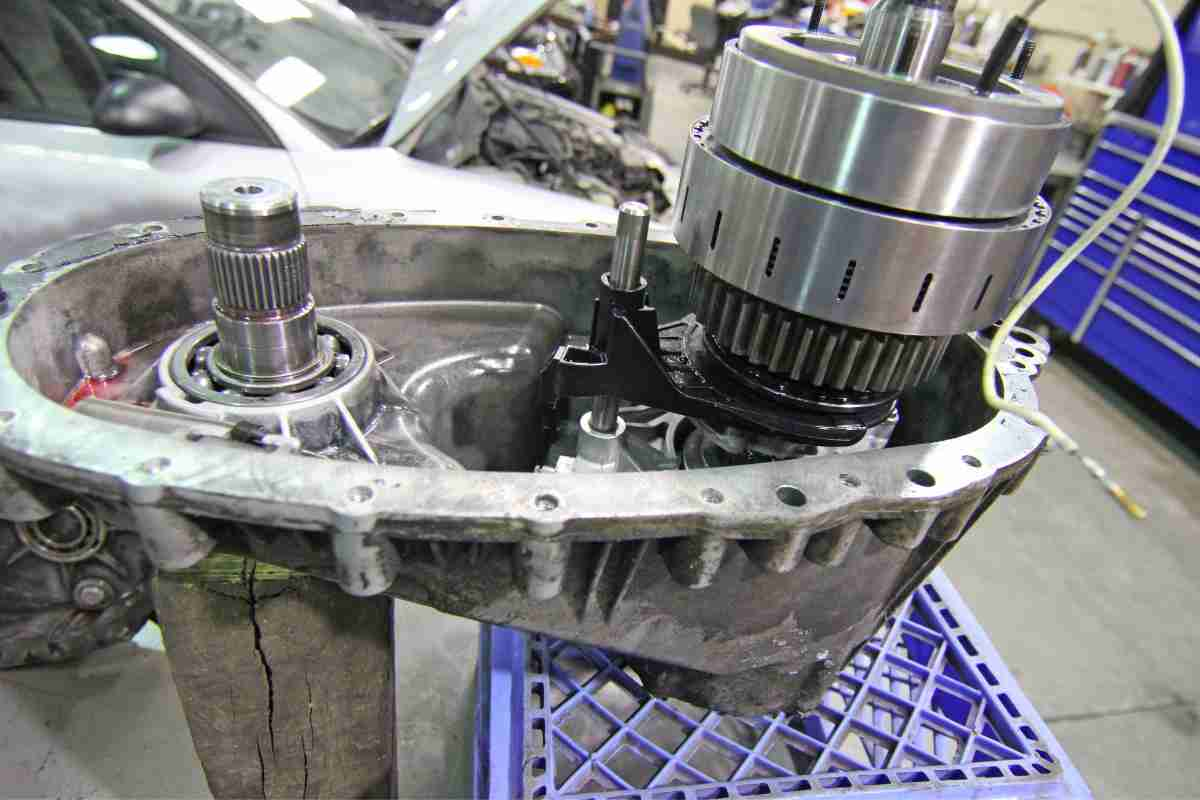Chevy Transfer Case Problems, Symptoms, And Solutions
The Chevy Silverado is beautiful, but its transfer case has unique problems. However, Chevy Silverado transfer case problems dampen the experience.

What problems does the Chevy Silverado transfer case have?
Some of the problems that come with the Chevy Silverado transfer case are the truck failing to go into four-wheel mode, grinding noises, the truck vibrating, and a leak in the transfer case.
We have been driving Chevys for quite some time now, and we understand the ins and outs of these amazing vehicles. In the following paragraphs, we will discuss some common issues with a Chevy Silverado transfer case.
Chevy Silverado: An Overview
The Chevy Silverado was introduced in 1998 and has been one of the most sought-after vehicles by truck lovers. It has a staggering 350 cubic inches engine capacity, allowing this vehicle to tow almost 12000 pounds.
This truck is for you if you are in for some heavy lifting. Moreover, this vehicle passes with flying colors, especially regarding comfort and safety.
Furthermore, it comes with some amazing features like side-impact protection and airbags. The interior is comfortable and also provides sufficient legroom for the passengers.
However, despite these features, one must consider the downsides. Let’s delve deeper and examine some transfer case problems in the Chevy Silverado. But first, let’s understand what a transfer case is.
What Is a Transfer Case?
The transfer case is an essential component of the drivetrain. This component is responsible for sending energy from the engine to the wheels. It is located between the differential and the transmission.
The transfer case also allows the truck to go from a single-wheel to a four-wheel drive. There are two types of transfer cases. There is a manual transfer case and an automatic transfer case.
Signs You Have a Bad Transfer Case?
The Truck Fails to Go into a Four-Wheel Drive
One of the most common symptoms of a bad transfer case is that the car fails to transition into four-wheel drive. Nothing happens whenever you try to put your car into four-wheel mode. The next time it happens to you, get the transfer case checked.
A Grinding Noise
Sometimes, you hear grinding noises when shifting to a four-wheel mode. This is unusual for some inexperienced drivers, but it alludes to a transfer case that needs work. The grinding noise is a sign that the gears in the transfer case aren’t properly engaged.
The Truck Vibrates
It isn’t uncommon for trucks to vibrate a little during driving. However, if your Chevy Silverado vibrates too much, it’s time to examine your transfer case. The vibration comes from the improper meshing of the gears.
The Service 4WD Light Blinks
If the service 4WD light comes on, it is a sign that the transfer case isn’t working correctly. It is better to have it inspected as quickly as possible.
Leakage in the Transfer Case
The transfer case is filled with special gear oil. The oil lubricates the gears and keeps them from wearing out. If there is a leak, the gears won’t be lubricated and will start wearing out.
You must check your transfer case for leakage if you hear a whining noise while the truck is in four-wheel mode.

The Truck Won’t Come Out of Neutral
Sometimes, your truck may refuse to come out of neutral. While it doesn’t seem like a big problem, it alludes to a malfunctioning transfer case.
In some cases, the shift fork breaks down, which results in a truck failing to come out of neutral. If you don’t know already, the shift fork is a tool for engaging gears in the transfer case.
A damaged shift form won’t engage the gears. As a result, the truck won’t come out of neutral. If you encounter such an issue, contact a mechanic right away.
Why Do Transfer Case Problems Occur in a Chevy Silverado
Low Fluid Level
As discussed above, one of the most common issues with a Chevy Silverado transfer case is low fluid level. The fluid level is the first thing you must check when your truck shows any of the signs mentioned earlier.
As we have discussed, the transfer case uses a special fluid. If the level of that fluid falls, the gears will grind and eventually fail.
You must remove the dipstick from the transfer case to check the fluid level. The dipstick has a line that signifies the fluid level. If the fluid falls below that line, you must refill it right away.
Transfer case fluid isn’t expensive and readily available at auto-part dealerships. Make sure to pour in the right type and the right amount of fluid.
Don’t overfill, or the fluid will leak out of the transfer case. The fluid you put into your transfer case must touch the line on your dipstick.
Dirty Fluid
Dirty fluid is another cause of problems in the transfer case. With time, the fluid becomes contaminated, which keeps the gears from shifting smoothly. You tell if the fluid is dirty just by looking at it.
Dirty fluid is dark in color, and it has a gritty texture. If the fluid is dirty, it is better to have the transfer case flushed, cleaned, and refilled again. By doing so, you will remove the contaminants affecting the system.
This service is available at most auto-part stores. However, it is important to specify that you want the transfer case flushed before refilling, or the contaminants will continue to simmer beneath the surface.
Worn Out Gears
As we already know, the transfer case gears can wear out with time. This problem occurs due to low fluid levels, contaminated fluids, or overheating. Worn-out gears tend to grind; after some time, they fail altogether.
Worn-out gears make your truck fail to come out of neutral. It can also result in your car getting stuck.
Damaged gears can also cause a fluid leak. If you notice any of these symptoms, ensure your transfer case is inspected for worn-out gears. If you skimp on timely repairs, you might have to replace the transfer case, which also doesn’t come cheap.
Improper Installation
If the transmission case is installed inappropriately, it will cause problems down the road. A bad installation can cause issues in the drivetrain, the transmission, and other truck components. Therefore, it is better to check if the transfer case is installed properly when you encounter any of the above mentioned issues.
Accidental Damages
Sometimes, it is accidental damage that makes a transfer case go bad. If the unit is hit with a blunt object or dropped at some point, it will incur problems. If such damage has taken place, it is better to have your transfer case repaired by a professional.
Overheating and Rusting
It is not uncommon for trucks to get overheated. However, if the issue persists, it can result in a damaged transfer case. Overheating can also result in bad gaskets, bearings, and seals.
Rusting is another common issue with transfer case units. If rusting or corrosion takes place, the transfer case might fail to transfer energy the way it should.
Troubleshooting Transfer Case Problems
If your Chevy Silverado transfer case has any of the above-mentioned problems, here are a few simple things you can do.
- Check the fluid level, and pour in some more if necessary.
- Get the transfer case flushed and refilled.
- Change the broken shift fork.
- Have the gears replaced.
Replacing a Chevy Silverado Transfer Case
If you miss out on timely maintenance, the transfer case might fail to function, and you will have to replace it altogether. The cost of replacing a transfer case depends on a number of factors. Two of the most important factors are the year and the model.
Replacing a transfer case isn’t cheap. A standard Chevy Silverado transfer case costs between $1000 and $1500.
Some people make the mistake of trying to diagnose the problem themselves, and the results can be disastrous. Therefore, it is better to assign the task to an experienced mechanic. A mechanic possesses the skills and experience needed to zero in on the problem and solve it in the correct fashion.
Key Takeaways
- You must always check the fluid level of your transfer using a dipstick.
- Pay close attention to the color and texture of the transfer case fluid.
- Also, pay attention to any grinding noises from the transfer case.
- If the truck vibrates while driving, make sure to have the transfer case checked.
- Lastly, make sure to have the gears inspected.
